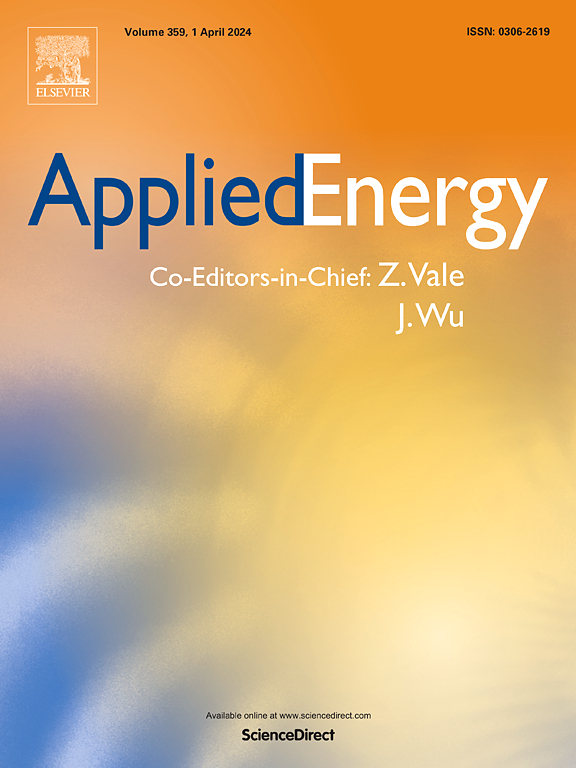Performance analysis of a novel CPV/T system with curved CIGS modules: Comparison with traditional flat modules
IF 10.1
1区 工程技术
Q1 ENERGY & FUELS
引用次数: 0
Abstract
Concentrating photovoltaic/thermal technology is a high-efficiency but low-cost approach for power generation and high-temperature heat extraction by utilizing solar energy. However, the high temperature, uneven light spot and temperature distribution are the core issues causing electrical efficiency degradation and cell damage, seriously affecting the reliability of the concentrating photovoltaic/thermal system. Although efforts have been made to address the problems by efficient cooling or concentrator improvement, the receivers are always crystalline silicon modules with flat surface. This is the first time to propose the novel concentrating photovoltaic/thermal system employing curved CIGS (CuInxGa1−xSe2) receiver. After particle swarm optimization, the standard deviation of local concentration ratio drops from 4.75 to 3.00. On the selected day, the illumination uniformity is optimized by 58.22 %, the maximum temperature difference drops from 24.9 °C to 14.79 °C, and the standard deviation of surface temperature is reduced from 5.61 °C to 2.71 °C, meaning the temperature uniformity is optimized by 51.69 %. With a smaller shading area, the curved receiver also saved 0.3 MJ solar energy, resulting in higher final water temperature at 87 °C. Although the reference efficiencies of CIGS at 16 % is lower than that of c-Si at 17.8 %, the proposed system still produces 4.3 % more electricity than traditional system and generates 6.8 % more electricity than the system with flat CIGS receiver. Over the whole day, the overall efficiency is 68.92 %.
采用弧形 CIGS 太阳能电池组件的新型 CPV/T 系统的性能分析:与传统平面组件的比较
本文章由计算机程序翻译,如有差异,请以英文原文为准。
求助全文
约1分钟内获得全文
求助全文
来源期刊

Applied Energy
工程技术-工程:化工
CiteScore
21.20
自引率
10.70%
发文量
1830
审稿时长
41 days
期刊介绍:
Applied Energy serves as a platform for sharing innovations, research, development, and demonstrations in energy conversion, conservation, and sustainable energy systems. The journal covers topics such as optimal energy resource use, environmental pollutant mitigation, and energy process analysis. It welcomes original papers, review articles, technical notes, and letters to the editor. Authors are encouraged to submit manuscripts that bridge the gap between research, development, and implementation. The journal addresses a wide spectrum of topics, including fossil and renewable energy technologies, energy economics, and environmental impacts. Applied Energy also explores modeling and forecasting, conservation strategies, and the social and economic implications of energy policies, including climate change mitigation. It is complemented by the open-access journal Advances in Applied Energy.
 求助内容:
求助内容: 应助结果提醒方式:
应助结果提醒方式:


